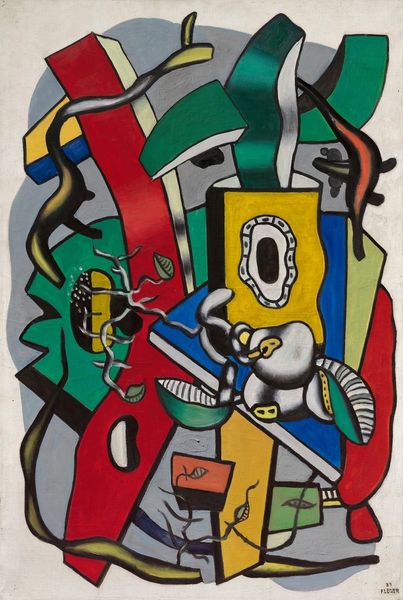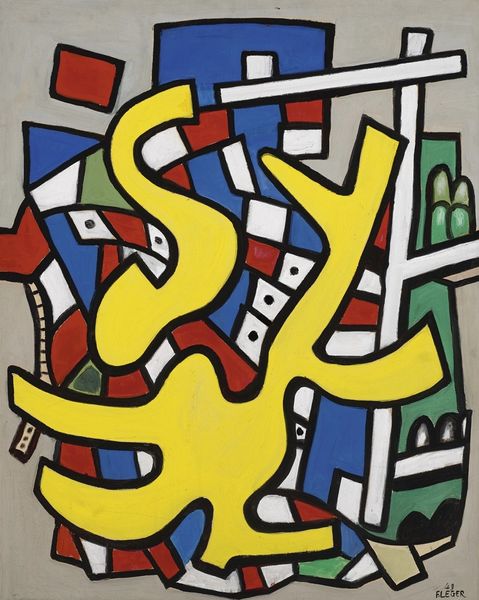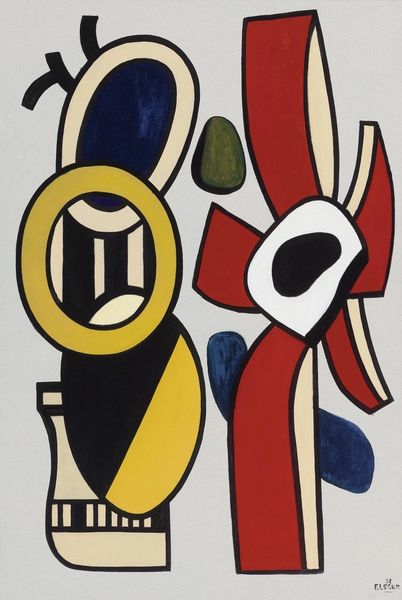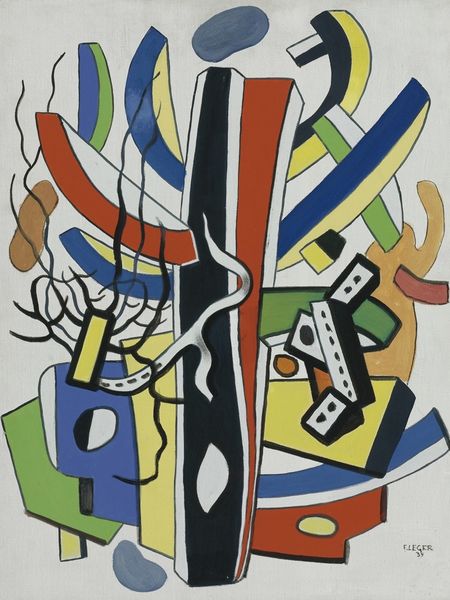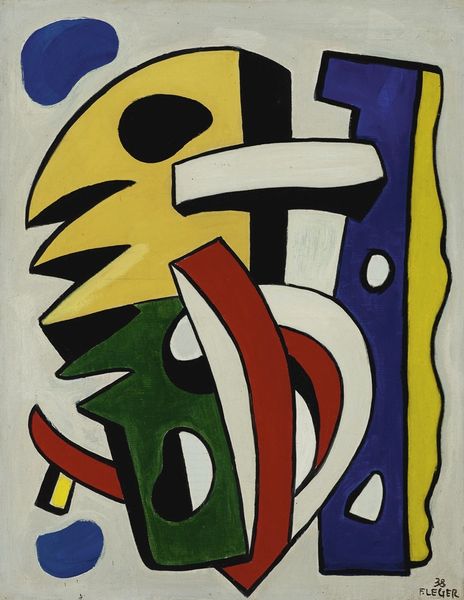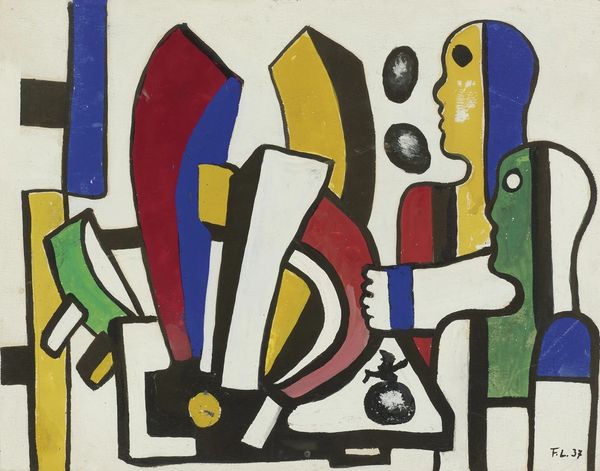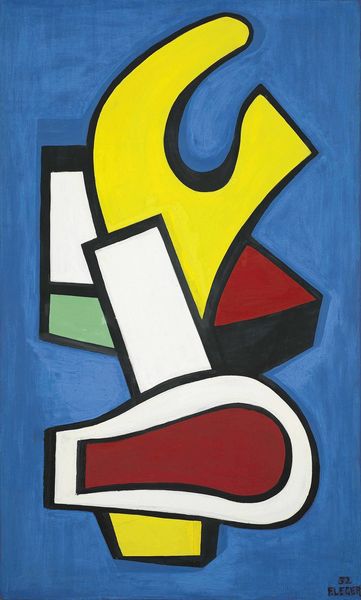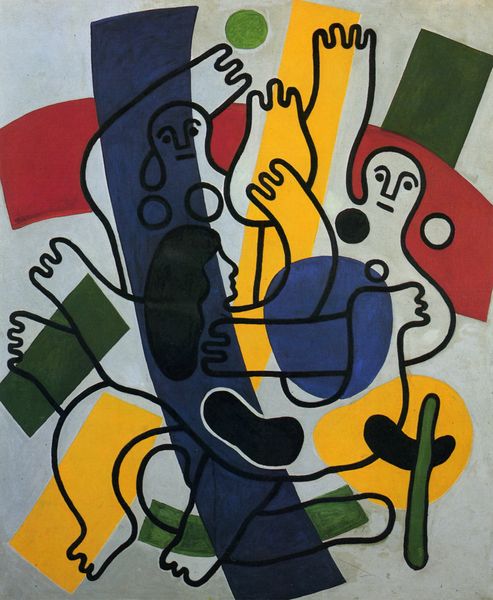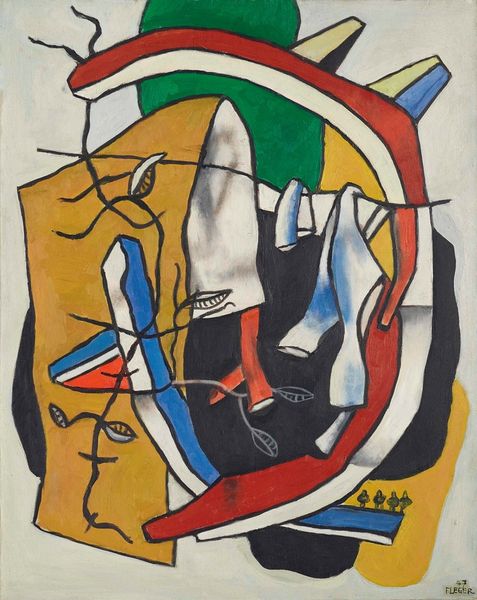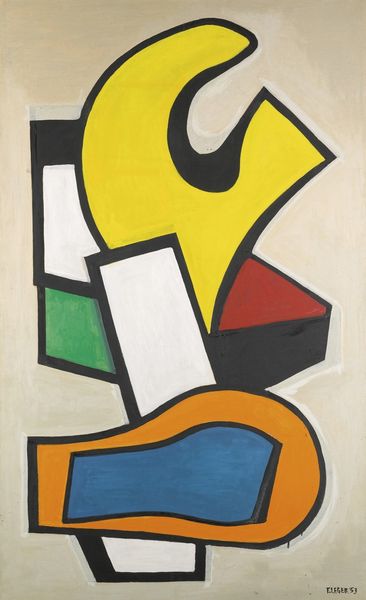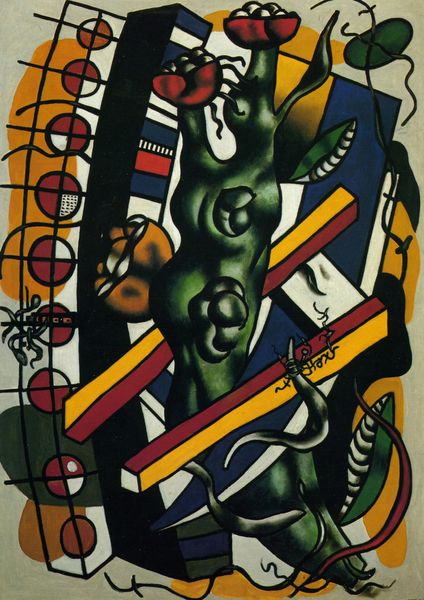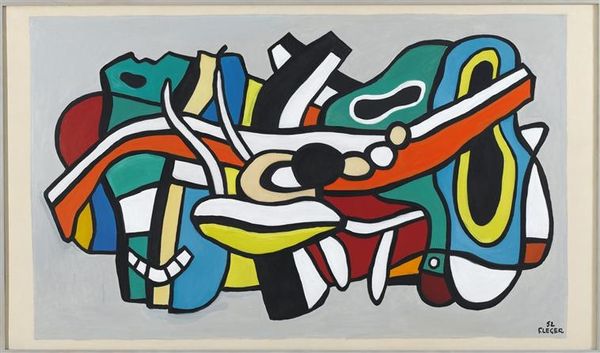
painting, oil-paint
#
portrait
#
cubism
#
popart
#
purism
#
painting
#
oil-paint
#
pop art
#
geometric
#
modernism
Copyright: Modern Artists: Artvee
Editor: This is Fernand Léger's "L’homme au melon," painted between 1943 and 1944. It's an oil painting, and the composition is quite striking with those bold colors and geometric forms. What do you see in this piece, in terms of its cultural relevance? Curator: Well, beyond the immediate visual impact, Léger's "L’homme au melon" sits within a complex moment of post-war reconstruction and reflects the artist’s own evolving political and social consciousness. Painted during and immediately after World War II, Léger, who had earlier embraced machine aesthetics, seemed to shift toward humanising the mechanical, trying to synthesize the two in a modern reconstruction narrative. Look at the fractured planes – are they merely formal exercises, or could they be read as reflecting the fragmented state of European societies back then, grappling with loss and re-invention? Editor: That’s a compelling point. The fractured planes could definitely represent societal fragmentation. Curator: Exactly. The stark contrast of colors – the cool blues and grays against the warmer reds and yellows – and the juxtaposition of the human form with abstracted shapes... how does that strike you? Could that symbolize anything broader, perhaps regarding societal tensions? Editor: Perhaps the tensions between traditional values and the rapidly changing world? Or even between different social classes? Curator: Precisely. It invites a dialogue about labor, identity, and the place of the individual within an increasingly mechanized and industrial world, but the "common man" in the title complicates matters of race and class by seemingly flattening them. Do you feel like you might explore this intersection in the future? Editor: I think I understand this art much more now than before, especially the connections between political movements and art from that time. It is a door opener! Curator: Indeed, viewing artworks as mirrors reflecting a specific period allows for us to reflect upon present day matters of equal weight, such as identity or equality, but under changed circumstances.
Comments
No comments
Be the first to comment and join the conversation on the ultimate creative platform.
